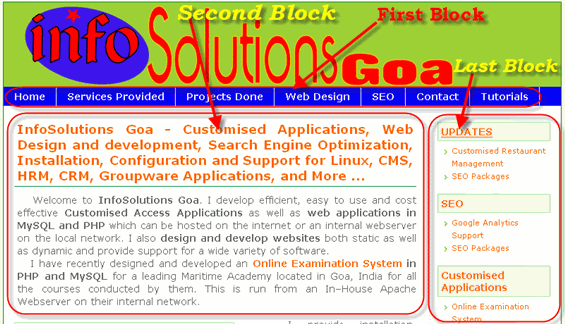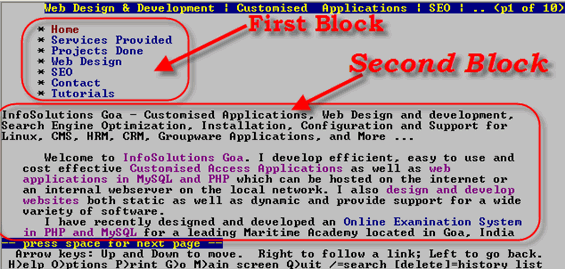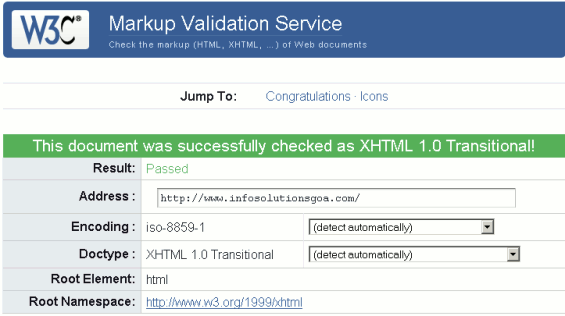Principles of Good Web Design – Fully CSS design, W3C Valid XHTML, Descriptive and Accurate Titles and alt Tags
Use a Fully CSS Design Instead of Tables for Layout
By the use of a fully CSS table–less design we can ensure that the main content of the page appears as close to the top of the page as possible without resorting to hacks. The appearance and the structure of the page can be seperated. The page loads faster as a lot of additional code is avoided. You can update the fonts accross the full site at once just by changing the CSS. CSS also improves the accessibility of web content accross various devices used to access web pages.
Use Of Flash in Your Website
For all practical purposes, flash pages are not indexed by search engines. This is what Google guidelines for webmasters
state "However, while we can process HTML and PDF files, we have a more difficult
time understanding (e.g. crawling and indexing) Flash".
To circumvent this many sites have resorted to tricks like showing one version for vistors and one for search engines and
some of them have got banned. Recently almost all the websites of a Spanish hotel chain got banned by Google.
The solution to this is if you want to have an all flash site, Make two versions of your website HTML and Flash version, and block the block the Flash version from the crawlers.
Observe How Search Engines View Your Page
Your main content has to appear as high on the page as possible. To observe how the search engines view your web page
a text based browser such as Lynx is recommended.
In the course of my work, I have come across a website whose actual content started at page 5 in Lynx. Such a site will perform
poorly in search rankings.
This is what Google Guidelines say "If fancy features such as JavaScript, cookies, session IDs, frames, DHTML, or Flash keep you from seeing all of
your site in a text browser, then search engine spiders may have trouble crawling your site." Below is the screenshot of this site in a normal browser, Firefox with the blocks marked out.

View in a Normal Browser like Firefox
Below is the View of this site in Lynx Text Browser. Note that the main content appears very close to the top. The use of Lynx to examine your site is one of the recommendation in the Google webmaster guidelines.

Descriptive and Accurate Titles and alt Tags
We have to make sure that our page titles accurately reflect and summarise the content on the page. In addition the alt tags of the images have to be descriptive and accurate. Words that are not needed should not be used. It is far better to write in a few precise words accurately reflecting the content, wihout resorting to repeating words, unless absolutely necessary.
Content Management Systems
If your site uses a Content Management system. Commonly the content management system have
a "?" character in their URLs. For example in Joomla, the URLs are of the form http://<NameOfDomain>/index.php? option=com_content&id=14&task=view&itemid=28
For proper indexing it is recommended to keep the number of parameters to two or at the most three.
You have also to make sure that the same page does not have more than one URL. It is also recommended to install an extension so that
the URLs are search engine as well as visitor friendly.
Also make sure that you can assign a different page title and description for each page at the very least.
If you cannot have separate titles for each page and have to use the same titles for all the pages then there is no option but to change your content management system.
W3C Compliance for XHTML and CSS
Although a W3C compliant site structure has no perceptible effect on search rankings in general,
being compliant ensures that your website is accessible across all devices and platforms including a plethora of mobile devices that exist today.
The primary aim of a website is to reach out to as many people as possible and being compliant ensures that.
I work to ensure that all websites designed by me are compliant as far as possible to W3C standards.

